As with diving, I took to climbing volcanoes later in life. My first attempt, climbing Agung on Bali was a failure. Rinjani, on Lombok, almost killed me.
Before I get on with this tale, I’d just like to mention a crowdfunding campaign running on behalf of Katni Wati, the founder of Rinjani Women Adventures, of Senaru in Lombok.
On the Agung climb, there were three of us plus a guide. At around 4 am, above the tree line but still with a ways to go, one of the others said he couldn’t continue.
“When I close my eyes I can hear chanting,” he blathered.
With only one guide, and given his state, we couldn’t leave him there, so we turned back. I stopped wanting to kill him before we reached the carpark.
Atop the rim at Agung. Note the shadow flung over Bali. Photo: Stuart McDonald.
I’d never climbed a volcano before, but it wasn’t till I failed to climb one, that I caught the bug. On my second attempt, I hired the same guide and climbed one on one. We made it.
There is something about standing at the top of a volcano that is special.
After the successful climb I ticked off a bunch of others, some big, some small. Tambora on Sumbawa, Sirung on Pantar, Ile Api on Lembata. Each had its own challenges and rewards.
Rinjani overshadows all. This from West Sumbawa. Photo: Stuart McDonald.
Rinjani though, loomed.
At 3,726 m Rinjani is the second highest volcano in Indonesia. Climbers start in Sembalun Lawang to the east, trek to the summit and leave to the north, finishing at Senaru. Most do the trek in three days. You camp the first night on the rim, ascend to the summit for dawn, then camp the second night in the caldera by the lake. The next day, you hike out. Sounds simple.
I was trekking with a friend from Jakarta and two of her friends from Surabaya, making a foursome. Accompanying us were the guide and two porters.
Cows don’t climb. Cows are smarter than people. Photo: Stuart McDonald.
The seven of us couldn’t have been more different, but walking together, we got to know each other fast. My friend I’d known for years—she was a retail assistant and we ate pig fat satay at a street front joint when I was in Jakarta. The Surabayans were from a fabulously wealthy family. The guide and porters from a village outside Sembalun Lawang on Lombok.
The first day was hard—I had underestimated the level of fitness required. By the time we reached the rim, exhaustion was upon me. We watched sunset, ate and crashed. The guide said he’d wake us at 2 am for the ascent.
The meadows go and go. Photo: Stuart McDonald.
We got going by 3am by which time there was a steady stream of climbers making their way up towards the summit. Walking in the dark, I could see the dot dot dot of headlamps ahead of us. Some were so far away it was like a glittering snake pulsated in the dark above us.
Not that I had much time to look up. The climb was hard. Made more–so by the rutted condition of the clay and rock trail and the volume of people—some fast, some slow. Worse was to come.
Nearing the rim. A bit steep. Photo: Stuart McDonald.
The clay and rock gave way to stone and the stone to scree. Climbing in the scree—small to tiny, pebble shaped stones—was like climbing in a bed of marbles. One step forward, two steps back. Slipping and sliding. Brutal on the knees and ankles, our trekking poles near useless.
It was still night, a satin sky, teased by the first shadows of light. Left right, left right. Every five minutes my friend and I would stop to catch our breath. We passed people in tears. Others vomited.
Our budget trip did not include chairs! Photo: Stuart McDonald.
The rest of our group had moved ahead, but we willed each other forward. Four more minutes, then another break. Four more minutes, then another break. Counting the steps. Counting the breaths. Twenty more breaths then I can sit down again.
More people crying.
The satin above us folded back, as the first rays sliced up the sky. Deep hues, the offspring of black and purple, split by white gold ribbons. We were going to miss dawn from the summit, but neither of us cared. All that mattered was getting there.
Left right, left right. Photo: Stuart McDonald.
On the last few hundred metres of the ascent, a narrow steep ridge curves around to the right. Now with first light we could see the precipice on each side. If we fell to the right, we’d stop in the crater base. To the left, it felt like the ocean. For the first time I was glad the climb had been in the dark.
As the sun broke the horizon an added challenge came into play. Walking up scree is hard enough, walking down (as I would later find out) harder still. Climbers who had had their fill of the summit were starting down, but rather than walk in the scree—they’d run.
Are we there yet? Photo: Stuart McDonald.
It was insane.
These climbers, already exhausted would run down the rim, almost out of control. A collision with someone still climbing could see both barrelling off into the abyss.
We made the summit. Caught our breath. Every summit is spectacular in its own way, but Rinjani is magnificent. We counted off the other peaks we could see—Agung and Tambora were the two easiest. The weather was crystal.
Some still had the energy to smile. Photo: Stuart McDonald.
As our guide said, “You need to feel some pain to get something good.” He was right.
The obligatory photo with an altitude marker, then we started the long slog down. On the crater rim we ate, loaded up and continued into the crater.
It was on dusk when we reached the campsite by the lake. The scene was filthy with rubbish, but the porters had found a less fetid spot and had started to set up the tents. Go hit the hot–springs the guide said.
The next morning by the crater lake. Photo: Stuart McDonald.
At that stage standing was painful, but a soak in hot–springs appealed. Despite the crowds at the lakeside, the hot–springs were not too busy. Warm and soothing, we floated and swam, splashed strangers—everyone laughed. Like the bath you never want to get out of, we lingered, not realising that once out, we would be back in an altitude climate.
None of us had brought a change of clothes nor towels. We ran like mad shivering chooks trying to find our camp as a thick cloying mist fell and enveloped all. Camp found, still shivering we laughed at our stupidity as the guide told us off. We gulped down hot coffee and stuffed down carbs. We slept like the dead—little did we know how close they were.
Porters. In the rain. In flip flops. Photo: Stuart McDonald.
The next morning we started late. The guide had said the last day was easy, so we opted for a later start.
It was not easy.
My friend and I reached the outskirts of Senaru around 7 pm, the Surabayans a couple of hours later. The guide had carried one for a spell. Exhaustion everywhere. Tempers frayed. Badly.
I am SO DONE. Photo: Trekking companion.
Late that evening, I was alone and back in Senggigi. A hot shower washed off three days of grime and pain. I sat on my little balcony and cried. Half relieved it was over, half overjoyed I’d completed it.
A few days later I read online that an Indonesian trekker had died in the crater the night we were there. They’d been in the same hot–springs, also into the dark, got lost on the way back to their campsite and died of exposure (the story says they may have drowned, my guide said it was exposure when I contacted them to ask). We probably swum with them, maybe even splashed them.
As our guide said “Give Rinjani the respect it deserves. It does not forgive.”

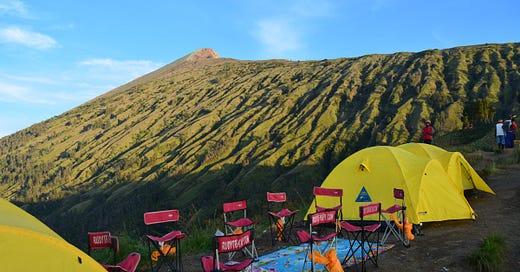



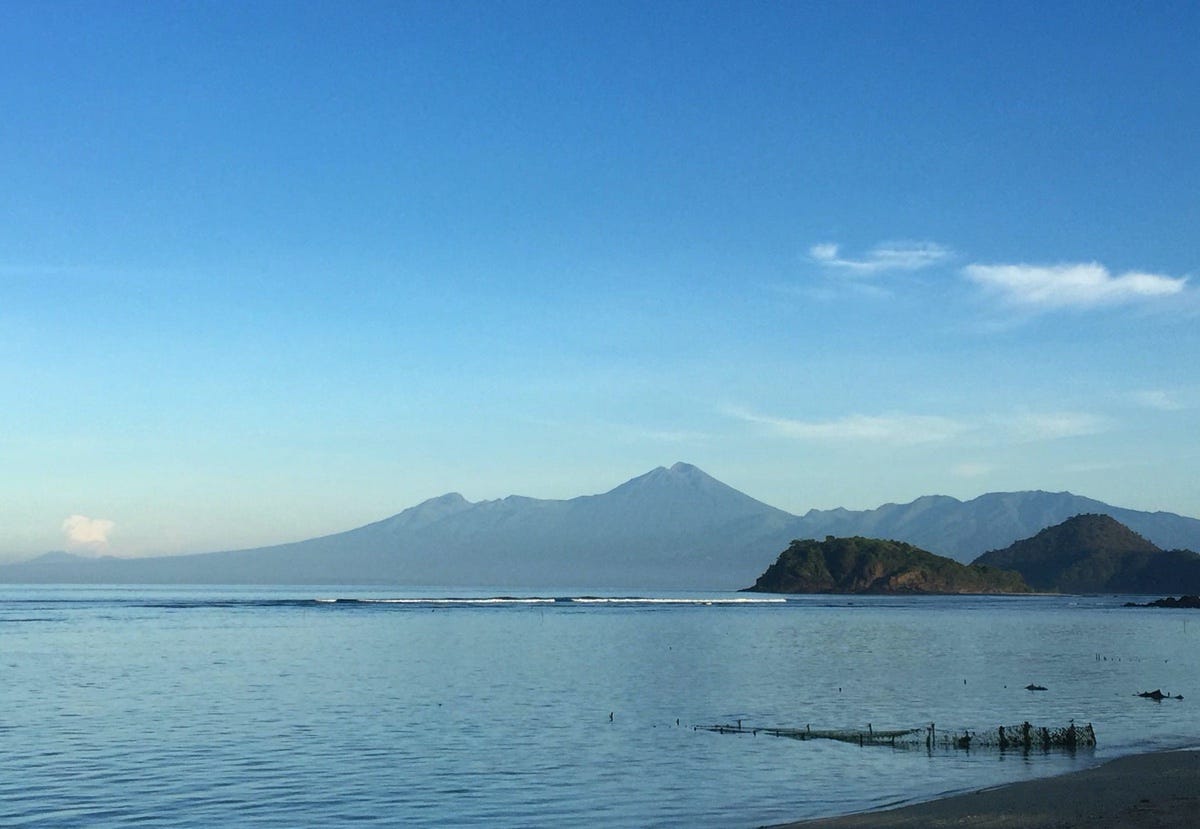
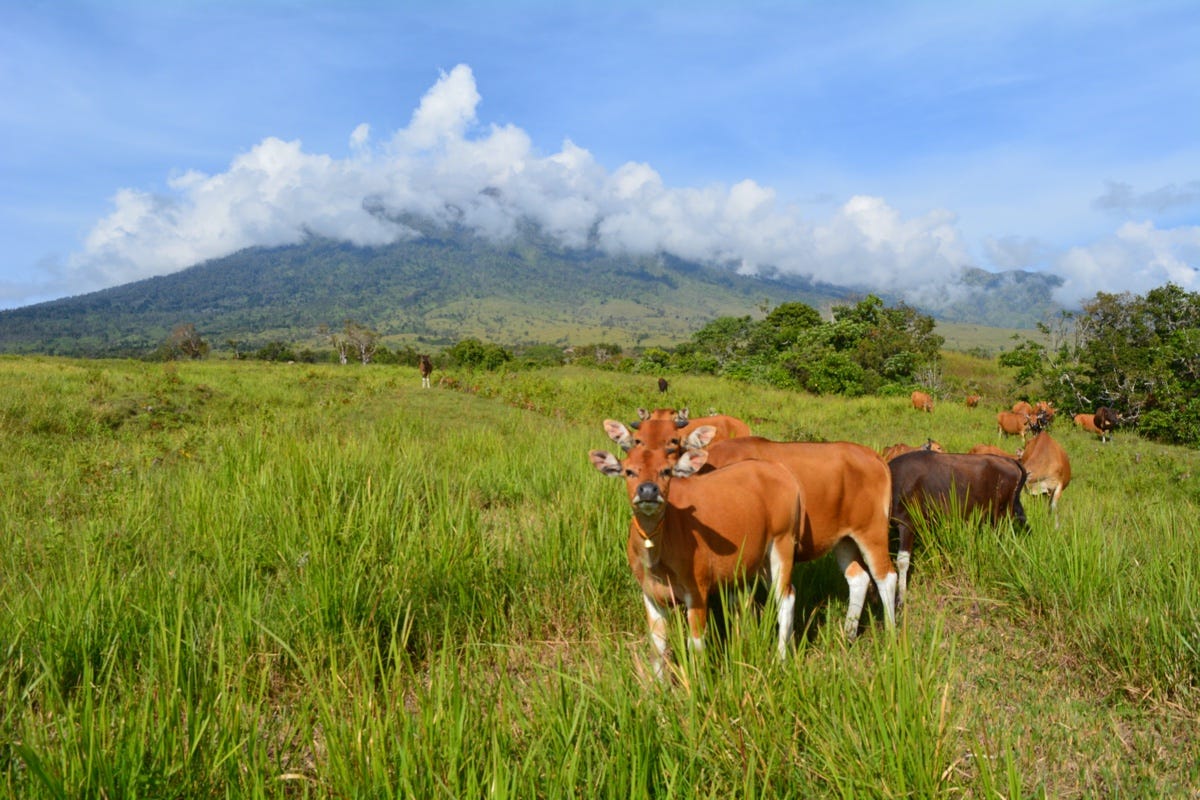




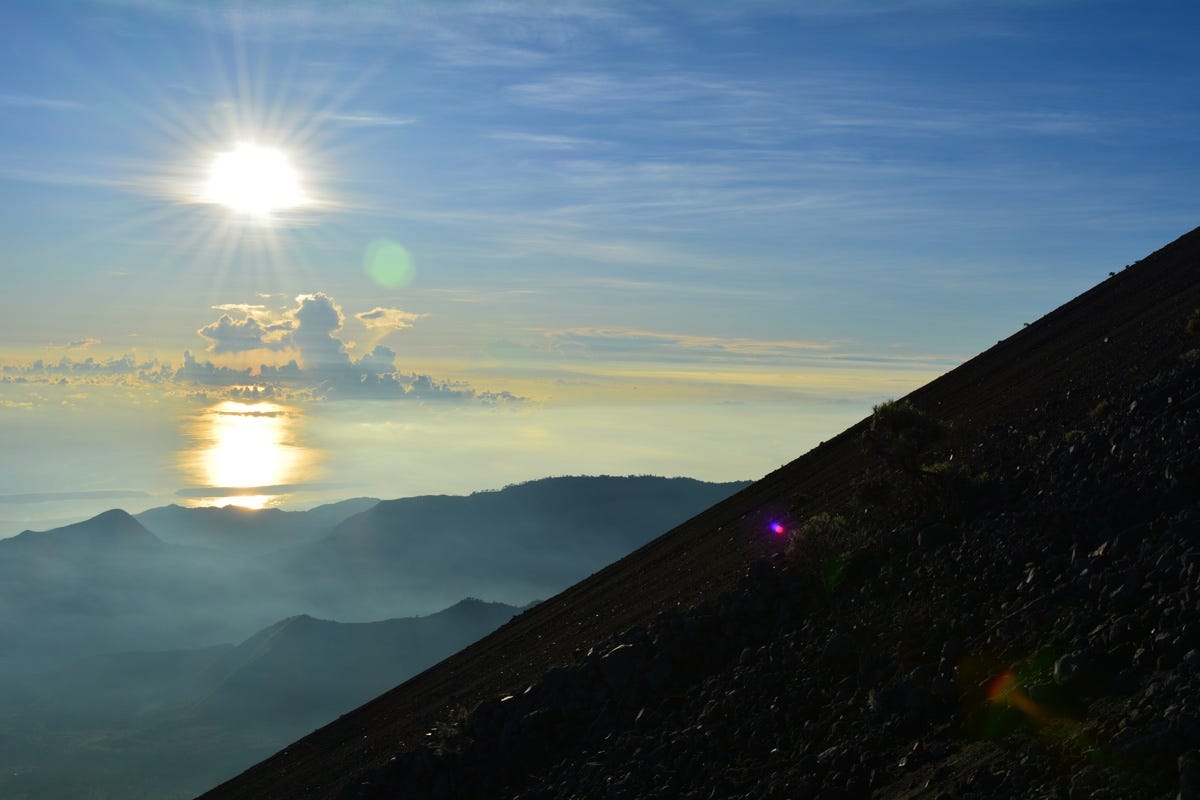

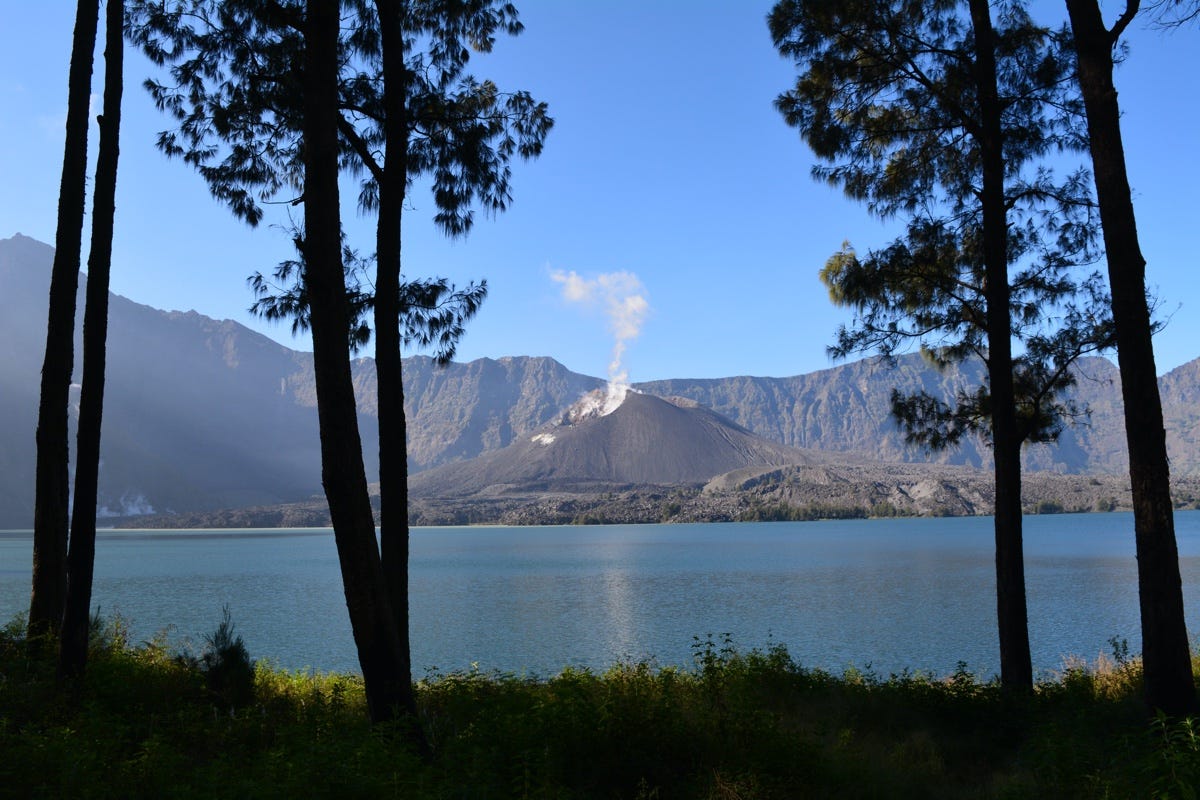











Share this post